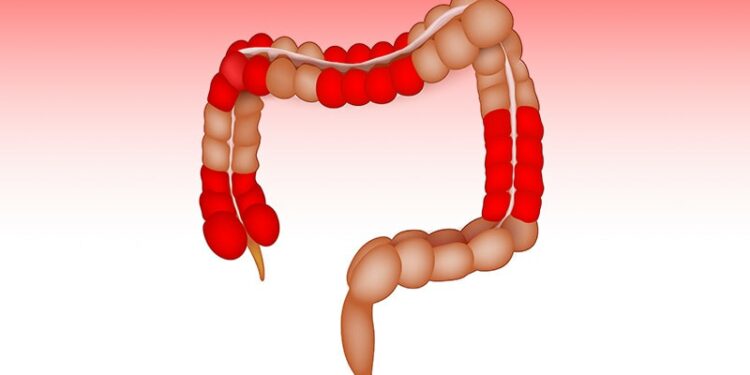[ad_1]
BERLIN — A multi-omics approach has identified a range of biomarkers associated with treatment response in patients with inflammatory bowel disease (IBD), according to the results of a new study (OP04) presented here at the European Crohn’s and Colitis Organisation (ECCO) 2025 Congress.
Differences uncovered in multiple messenger RNAs, proteins, metabolites, and gut microbiota were associated with responders and nonresponders to biologics and Janus kinase inhibitors, suggesting the potential for predictive biomarkers in IBD, including Crohn’s disease (CD) and ulcerative colitis (UC).
“With further work we hope to confirm these findings and evaluate their clinical relevance in identifying patients most likely to respond to tailored therapeutic interventions,” said Montserrat Baldan-Martin, PhD, a researcher at the University Hospital of the Princess, Madrid, Spain.
The treatment of IBD is challenging due to the heterogeneity across clinical, immunological, molecular, genetic, and microbiologic features, with one third of patients failing to respond to any one treatment.
Baldan-Martin and colleagues wanted to find predictive biomarkers of response by examining the differences across multi-omics profiles relative to different therapies.
The study analyzed 127 patients with IBD (57 with CD and 70 with UC) before and after 14 weeks of treatment with one of the following: Antitumor necrosis factors (TNFs), ustekinumab, vedolizumab, or tofacitinib. Patient response to treatment was evaluated using endoscopic criteria that categorized them as responders or nonresponders to the different therapies.
In addition, molecular data from various biologic samples — serum, urine, extracellular vesicles, intestinal biopsies, and stool — were tested using transcriptomics, proteomics, metabolomics, and metagenomics.
Clear Differences
“The most significant differences were seen in gene expression within intestinal tissue of responder and nonresponder patients with ulcerative colitis taking vedolizumab,” Baldan-Martin reported.
Proteomic analysis revealed that a total of 1377 proteins were identified across all groups (CD, UC, and the four drug classes/therapies). Responders and nonresponders for each therapy expressed different proteins in serum extracellular vesicles and intestinal tissues.
For example, patients with CD who responded to anti-TNF therapies had 138 different proteins from those of anti-TNF nonresponders, while patients with UC who responded to anti-TNF therapies had 218 different proteins from those of anti-TNF nonresponders, reported Baldan-Martin.
Also, we observed almost no proteins “in common between ulcerative colitis responders versus nonresponders for all treatments,” she noted. And we “saw only three proteins in common with Crohn’s disease patients [on different drugs].”
Metabolomic analysis identified deregulation of 24 serum lipoproteins in CD responders to ustekinumab compared with nonresponders.
“We observed greater differences in the lipoproteins in serum than metabolites in serum and urine,” Baldan-Martin added.
Analysis of biologic pathways also highlighted enrichment in ketone and butyrate metabolism, mitochondrial electron transport chain activity, carnitine synthesis, and fatty acid oxidation pathways, while metagenomic analysis revealed the greatest microbial differences in UC responders and nonresponders to anti-TNF therapies.
Baldan-Martin said research was ongoing with a new cohort of patients that aims to validate some of the biomarkers and help identify the patients most likely to respond to tailored therapeutic interventions.
“One of the challenges is integrating results from different omics approaches to create a more holistic understanding of the disease,” she said, adding that she hopes the research “will potentially open doors for early detection through multi-panel biomarkers.”
Session moderator Mark Samaan, MD, consultant gastroenterologist at Guy’s and St Thomas’ NHS Foundation Trust, London, England, said that “the findings related to nonresponse to specific drugs in UC and CD were interesting. With longitudinal follow-up, we’d hope this might help us pick out patients less likely to respond and who show early nonresponse to specific drugs based on serum, urine, and fecal sampling.”
“It’s very helpful to know if someone is a nonresponder within 14 weeks because we can then move the patient on to something else relatively quickly,” he added.
Baldan-Martin and Samaan declared no relevant financial disclosures.
[ad_2]
Source link : https://www.medscape.com/viewarticle/new-biomarkers-identified-treatment-response-ibd-2025a10004oe?src=rss
Author :
Publish date : 2025-02-24 03:42:07
Copyright for syndicated content belongs to the linked Source.














